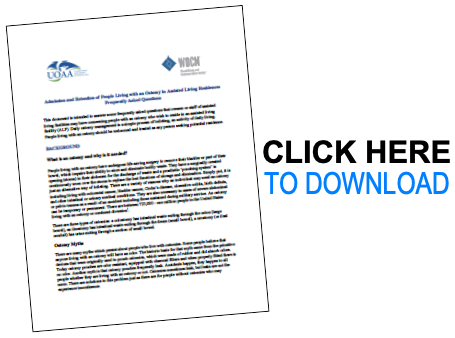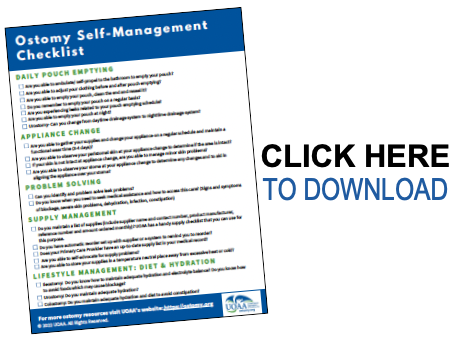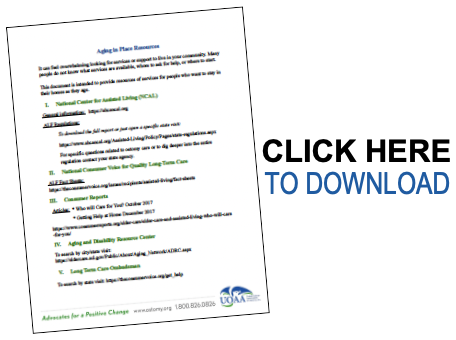UOAA Action Center
Raise Awareness
Resources
UOAA has partnered with the Wound Ostomy Continence Nurses Society (WOCN Society) and developed a FAQ document for patients in response to concerns that aging residents were being denied access to assisted living facilities (ALF) because they have an ostomy. This document is intended to dispel myths on the care required for residents with an ostomy and answer some frequently asked questions that owners or staff of assisted living facilities may have concerning people with an ostomy who wish to reside in an ALF. Daily ostomy management is an activity of daily living – the simple process of toileting. People living with an ostomy should be welcomed and treated as any person seeking potential residence.
Frequently Asked Questions
During 2021, UOAA/WOCN spoke with several state associations of these facilities across the country. We are currently working on state specific outreach plans including providing an educational webinar to counter what we believe is an unfounded stigma around living with an ostomy.
As you research facilities for potential residency and encounter any similar concerns, please use the above FAQs in your own self-advocacy effort.
UOAA has also developed these additional tools to help the community self-advocate for living in this type of facility.
Ostomy Self-Management Checklist
UOAA developed a self-assessment checklist to help you understand the components of ostomy care and determine if you need assistance with any component of care.
Aging in Place Resources
Video: Preparing For The Future – Where You Live Matters: Aging in Place with An Ostomy. Presented by Jeanine Gleba, UOAA Advocacy manager and Susan Mueller, BSN, RN, CWOCN Advocacy Committee Co-Chair.
UOAA created a document with a list of resources to assist people aging and remaining in their homes. These include resources such as your local national council of independent living and your state’s long term care ombudsman and links to ALF fact sheets.






